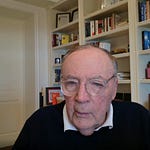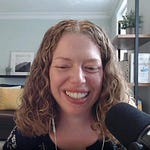When Deep Work came out in 2016, I tore through it like a thriller. As a card-carrying productivity-hack obsessive (color-coded to-do lists, time-blocked calendars, the whole thing), I thought I’d seen every tip and trick out there. But Cal Newport wasn’t peddling hacks—he was preaching focus. In a world of noise, distraction, and “let’s circle back by EOD” emails, Cal argued that deep, undistracted work is the real path to success. It wasn’t about squeezing more into your day; it was about doing better, more meaningful work with the time you’ve got.
Over the years, Cal has continued to refine and expand his ideas with books like Digital Minimalism, A World Without Email, and Slow Productivity. Remarkably, he’s managed not only to remain prolific while balancing a full academic career and hosting a weekly podcast—he’s also sold millions of copies, all while avoiding social media and sticking to a decidedly unconventional approach to audience-building.
So when we invited him to join us for an exclusive live Author Insider Q&A, I had high hopes—and Cal delivered. What followed was a candid, insightful, and practical conversation about how nonfiction authors can build lasting careers without relying on constant self-promotion or churning out endless content.
Just want the highlights? I’ve selected a dozen key moments—each paired with a quote from Cal and a quick take on what it means for writers who want to focus on substance, not noise.
(Editor’s note: some quotes have been lightly edited for clarity and concision.)
1. Focus on your email list, not your social media following.
“Often the connection between social media audiences and book sales [is] small… this is why, for example, agents now... really don’t care nearly as much about your social following as they would, for example, like an email list.”
For nonfiction authors especially, this approach can be both validating and clarifying. The energy you pour into Instagram might feel productive, but it’s rarely as effective as a direct, consistent newsletter relationship. And the bigger danger? Letting your content shift to what the algorithm rewards instead of what your work is really about.
“[Y]ou have this sort of slow creep into audience capture where now suddenly you look at what you’re writing two years later and are realizing this is actually just playing into the Instagram promotion algorithm and you’ve drifted away from where you are”.
2. There are better ways to market test than chasing likes.
When asked whether authors should test ideas online before committing to them, Cal didn’t dismiss the impulse—but he did challenge the medium. Writers have always market-tested ideas, he noted, long before social media entered the picture.
“I’ve always tested my ideas, for example, in my newsletter. I’ve tested [them] in talks. I’ve tested [them at] appearances.”
3. A newsletter keeps your writing muscles in shape.
While Cal is famously protective of his time, he doesn’t see long-form content creation, like newsletters or podcasts, as a distraction from writing books. In fact, he sees it as training.
“I think if you’re a writer… a newsletter is the [same] sort of form and length of a section of a book chapter, right? You’re in the same idiom that you’re going to be in when you’re doing book writing. It’s not necessarily a bad thing that can keep you in shape.”
Rather than viewing a newsletter as an obligation or marketing channel, Cal frames it as a way to stay in creative shape between books. It’s a space to test structure, clarify thinking, and keep the ideas flowing. As long as you’re focused on the content and not obsessed with list growth tactics, it’s not just time well spent, it’s part of the craft.
4. Content is king. Follower count is not.
In an era when “build your platform” is practically publishing gospel, Cal offered a refreshing counterpoint: a big audience doesn’t necessarily make a book successful, and many successful books weren’t driven by big platforms.
“A lot of times when you see a successful email newsletter list, it’s not, ‘I became a successful author because my email newsletter list got so big.’ It was, ‘I wrote this book, and it did very well, and I wanted to make sure that I had direct access to my audience.’”
According to Cal, we often mistake correlation for causation. When we see a bestselling author with a massive following, we assume the following caused the success. But more often, the book came first, and the platform was built afterward to maintain momentum. In other words: focus on writing the book people want to talk about. Build your list to support that, not to replace it.
5. The best promotion plan? Write a book with legs.
Many authors feel pressure to go all-in on launch week—tweeting, podcasting, posting, promoting—then quietly disappearing. Cal takes a longer view.
“You can’t publicize yourself into… the good 12-month numbers. You publicize yourself into the bestseller list the first week.”
He pointed to his own breakout title, Deep Work, which never made the New York Times list but is now approaching three million copies sold. Why? Because it resonated. People recommended it. The idea spread further than any press campaign could have pushed it.
That’s not to say launch efforts don’t matter. Cal does plenty of interviews when a book comes out. But after the initial window, he lets the book do the work. “If it’s the right content at the right time,” he said, “the book has legs and it rolls.”
6. AI isn’t replacing deep thinking anytime soon.
Listen to this episode with a 7-day free trial
Subscribe to Author Insider From The Next Big Idea Club to listen to this post and get 7 days of free access to the full post archives.









